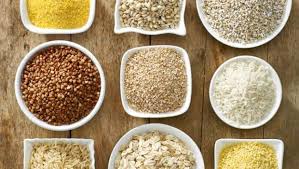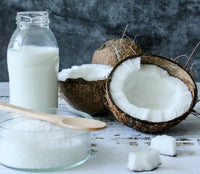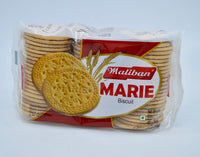Health and Wellness Benefits of Consuming Millets
Millet is one of the oldest cereals used as food by nomads and semi-nomads in the Stone Age. In archaeological excavations in China, grains of panicle and piston millet were discovered, dating from 7,000 to 8,000 years BC.

In ancient times, millet was already grown nationwide in Asia and Europe and ensured human nutrition in many cultures. It was seen as a symbol of diligence and fertility in Africa and Asia, from which the custom developed to throw millet grains at the bride.
In the 17th century, millet cultivation in Europe became less important due to the introduction of new crops such as potatoes and corn. Also, millet has been pushed back by other types of cereals, such as wheat and rye, since their yield per hectare is significantly higher. As a result, millet became a secondary grain in the 18th century and was gradually forgotten.
It was only in the 21st century that millet finally experienced a renaissance in Europe and, due to its nutritional value, can now be found more and more on the menus of health-conscious people.
For a long time, the supply over the world was based exclusively on imports from African and Asian countries. Still, in the meantime, numerous European farmers have discovered the forgotten grain for themselves.
Cultivation
In Asia and Africa, millet has been an indispensable staple for thousands of years. Around 90 percent of the world harvest is produced in India, Nigeria, and Niger. Because the millet plants have a significant advantage, they are incredibly undemanding, thrive even on poor soil, are armed against drought, and have a very short vegetation period (around 100 days). Harvest failures are, therefore, extremely rare.

Nutritional Values of Millet
Millet belongs to the sweet grass family. The grain contains many vital minerals and trace elements. It has a high content of fluorine and silica and also contains magnesium, potassium, phosphorus, iron, sodium, selenium, zinc, vitamin B, E, K, and folic acid. Contents of millet have a positive effect on bones, joints, hair, and nails.
Millet is free of gluten but contains all nine essential amino acids, which is virtually unavailable in other grains.
Natural Iron for healthy blood
Millet is an excellent source of iron and magnesium. In terms of iron, it is one of the front runners compared to other types of grain.
100 grams of cooked millet a day already cover a quarter of the human's Iron requirement with about 3.5 mg of iron. Adequate iron absorption for the body is essential for oxygen transport, energy generation, cell division, and it also helps with chronic fatigue.
Millet is suitable for people with diabetes.
Millet can counteract postprandial hypoglycemia and thus excessive insulin secretion. It is a very effective meal for patients with type 2 diabetes. The 28-day millet cure provided a significant reduction in Blood sugar levels and an increase in good HDL cholesterol.
Millet is very rich in phytochemicals.
Millet has antioxidant and antimicrobial properties and counteracts conditions such as diabetes, vascular calcification, and cancer. This is attributed, among other things, to their secondary plant substances, which include various polyphenols, like phenolic acids, flavonoids, and tannins as well as phytic acid and oxalic acid.
Health, Wellness and Therapeutical Importance of Millet
Millet pillow for heat and cold therapy
Millet can be used in the form of a grain pillow. Whip the small grains into the fabric and heat them at 100 degrees to a maximum of 15 minutes on the bottom rail of the oven in a plate or place them in the freezer to cool them down. Areas of application include tension, muscle pain, sprains, bruises, and menstrual cramps.
Detoxification
Millet has a highly effective detox property due to the presence of phytochemicals. It also strengthens the body, which in turn has a positive effect on the mind and soul.
Treatment for fibroid, cysts, and benign tumors.
In traditional medicine, fibroids, as well as cysts and polyps, are understood as an emergency reaction to an excessive toxic load. Apart from its detox ability, millet treatment is considered an excellent therapy for fibroids (benign tumors in or on the uterus).
Medical and Medicinal Benefits
Millet has not only been a valued food for thousands of years but is also an ancient medicinal plant that is still used in traditional folk medicine today. It is no longer a secret that millet can contribute to the beauty of the skin, hair, and nails; moreover, it has a constructive, warming, rejuvenating, nerve-strengthening, draining, detoxifying and anti-inflammatory effect. The application areas include:
- Connective tissue weakness
- Hair loss
- Cracked nails
- Diseases of the vessels
- Joint problems
- Varicose veins
- Hemorrhoids
- Indigestion
- Forgetfulness
- Fatigue
- Cold
Storing Millets
Due to its fatty acid composition, millet can quickly become rancid. Therefore, it should be used up quickly or stored most properly. The following are appropriate ways to store millet correctly;
- Store the millet into a clean, dry, and sealable container.
- Note the best-before date.
- Keep the container dry, cool, and protected from light.
- Keep all containers sealed.
Millet: The preparation
The preparation of millet is straightforward and requires little effort. Also, there are many recipes for preparing millet, so the taste depends on personal choice.

Millet can also be cooked in a steam cooker at 100°C for about 35 minutes. If it was soaked overnight, a cooking time of 5 to 10 minutes is sufficient. You can prepare pure millet, like a risotto, a millet pudding or porridge.
Millet Porridge
Rinse the millet grains. Boil with milk and dried fruit in a saucepan while stirring. Switch to the lowest heat level and let the millet porridge cook for about ten minutes, stirring occasionally.
In the meantime, roast the seeds or nuts in a pan without fat, chop the fresh fruit. Sweeten the finished porridge to taste with honey or maple syrup, fill in two cereal bowls, spread the fresh fruit, and the roasted grains on top.

Recipe variations for millet porridge:
The millet porridge can be varied again and again by the fruit selection: For example, a tropical banana-coconut-grated-pineapple mix is conceivable; strawberries, blueberries, and raspberries are also seasonal.
Instead of sugar and milk, broth or tomato juice and crunchy peppers and zucchini cubes quickly turn the millet porridge into a delicious lunch or dinner.
References
FoodTank Nigeria, April 2018. Millets and Sorghum: Forgotten Foods for the Future
Oishimaya Sen Nag & WorldAtlas, April 2017. The Leading Millet Producing Countries In The World
Asian Food Science Journal 14(2): 9-19, 2020; Article no.AFSJ.53545 ISSN: 2581-7752
- R. Abah, C.N. Ishiwu, J. E. Obiegbuna and A. A. Oladejo, February 2020. Nutritional Composition, Functional Properties and Food Applications of Millet Grains.

 Rice
Rice
 Millets
Millets
 Flour & Noodles
Flour & Noodles
 Spices & Condiments
Spices & Condiments
 Dry Seafood
Dry Seafood
 Oil & Ghee
Oil & Ghee
 Coconut Products
Coconut Products
 Chutneys & Sambols
Chutneys & Sambols
 Biscuits & Snacks
Biscuits & Snacks
 Herbal Products
Herbal Products
 Personal Care & Clothing
Personal Care & Clothing
 Homeware
Homeware
 All Products
All Products





